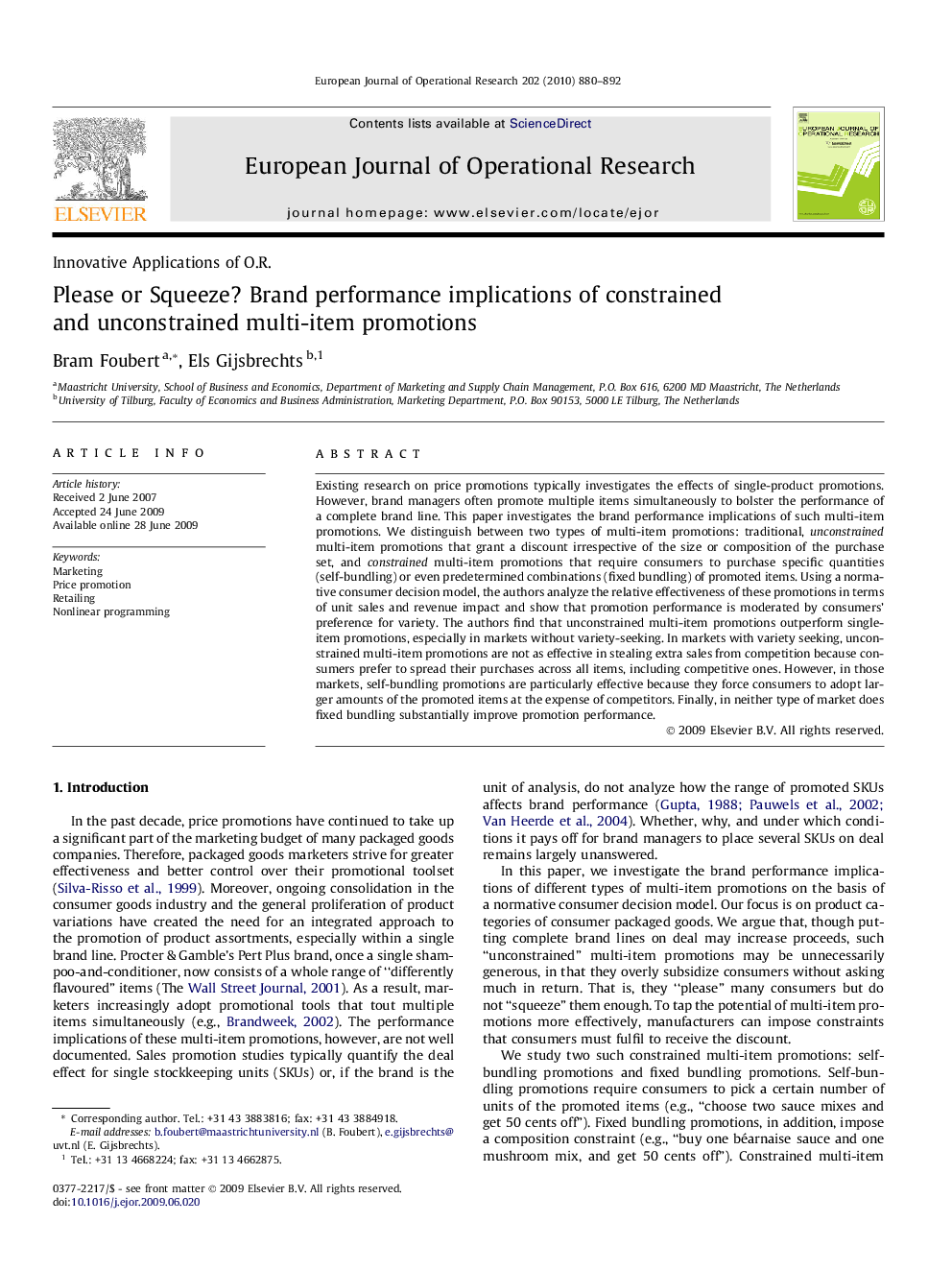| Article ID | Journal | Published Year | Pages | File Type |
|---|---|---|---|---|
| 481172 | European Journal of Operational Research | 2010 | 13 Pages |
Existing research on price promotions typically investigates the effects of single-product promotions. However, brand managers often promote multiple items simultaneously to bolster the performance of a complete brand line. This paper investigates the brand performance implications of such multi-item promotions. We distinguish between two types of multi-item promotions: traditional, unconstrained multi-item promotions that grant a discount irrespective of the size or composition of the purchase set, and constrained multi-item promotions that require consumers to purchase specific quantities (self-bundling) or even predetermined combinations (fixed bundling) of promoted items. Using a normative consumer decision model, the authors analyze the relative effectiveness of these promotions in terms of unit sales and revenue impact and show that promotion performance is moderated by consumers’ preference for variety. The authors find that unconstrained multi-item promotions outperform single-item promotions, especially in markets without variety-seeking. In markets with variety seeking, unconstrained multi-item promotions are not as effective in stealing extra sales from competition because consumers prefer to spread their purchases across all items, including competitive ones. However, in those markets, self-bundling promotions are particularly effective because they force consumers to adopt larger amounts of the promoted items at the expense of competitors. Finally, in neither type of market does fixed bundling substantially improve promotion performance.
